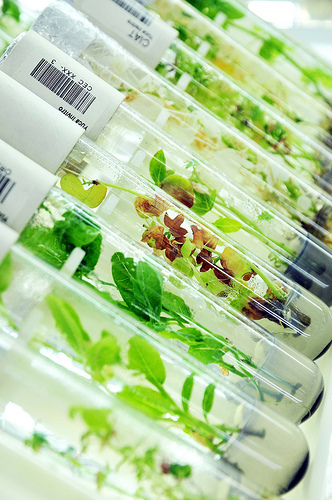
With “sustainability” on the minds and lips of more and more people — determined to use resources today in ways that do not jeopardize the needs of future generations — the American Chemical Society (ACS) today began one of the largest-ever sessions devoted to sustainability and green chemistry.
Scheduled for ACS’ 242nd National Meeting & Exhibition, which continues here through Thursday, the 29 symposia include more than 150 scientific reports on those topics. They range from green chemistry for sustainable production of fuels and innovative new solutions to water pollution to controlling emissions of the greenhouse gases that drive global climate change.
Those symposia marked with an asterisk (*) indicate symposia scheduled to be recorded as part of the Electronic Dissemination of Meeting Content project. They will be available online. Go to green archives for recordings from previous ACS National Meetings and conferences, including the 14th Annual Green Chemistry and Engineering Conference.
Here are the National Meeting’s sustainability-related symposia, with the program area in parentheses for use in searching the onlineTechnical Program for times and locations of individual presentations.
- Future Agricultural Consumer Safety Demands for the Global Market (AGFD)
- Advances in Protection of Agricultural Productivity, Public Health, and the Environment (AGRO)
- Endangered Species Act and Pesticide Regulation (you can view more details here): Scientific and Process Improvements (AGRO)
- Managed Ecosystems, Pesticides, and Biodiversity (AGRO)
- Modern Agriculture and Biotechnology: Tools for Sustainability (AGRO) *
- Sustainability and Innovation for a Cleaner Environment (BMGT) *
- Nitrogen and the Human Endeavor: Chemistry, Effects, and Solutions (CASW) *
- Green and Advanced Technologies: Protection and Regulation (CHAL) *
- Creating Innovation by Collaboration in Green Chemistry Between Industry University Centers and Students (CHED) *
- Greening Undergraduate Education: Lecture and Laboratory Innovations (CHED) *
- A Sustainable Future: Interface of Energy, Food, Water, and Climate Sustainability (COMSCI) *
- Effects of Wildfire on Watersheds and Water Supply (ENVR)
- Emerging Issues and Solutions for Sustainable Water and Wastewater Systems (ENVR)
- Heterogeneous Catalysis for Sustainable Energy Applications (ENVR)
- Novel Solutions to Water Pollution (ENVR)
- Urban Greenhouse Gas Emissions, Climate Change, and Mitigating Impacts (ENVR)
- Advances in Membranes and Separation Science and Technology for Fuels and Energy Production (FUEL)
- Emerging Energy and Fuel Technologies: Batteries, Solar Cells, and Alternative Fuels (FUEL) *
- Emerging Energy and Fuel Technologies: Solar Hydrogen Production (FUEL) *
- Fuel Cells Chemistry and Operation (FUEL) *
- Green Chemistry for Sustainable Production of Fuels, Chemicals, and Energy (FUEL)
- Greenhouse Gas Emissions: Control, Conversion, and Utilization for Fuels and Energy Production (FUEL)
- Recycling Carbon: Catalyzed Conversion of Non-food Biomass to Fuels and Chemicals (I&EC)
- Resource-efficient Chemistry: Energy, Electrochemistry and Environment (I&EC)
- EPA Presidential Green Chemistry Award Winners: Research and Applications (ORGN) *
- Renewable Alternatives to Petroleum: Biomass for Advanced Energy and Fuel Production (PETR)
- PET Recycling: Bridging the Gaps through Innovation (PMSE)
- Polymer Coatings for the Environment, Energy, and Sustainability (POLY)

























